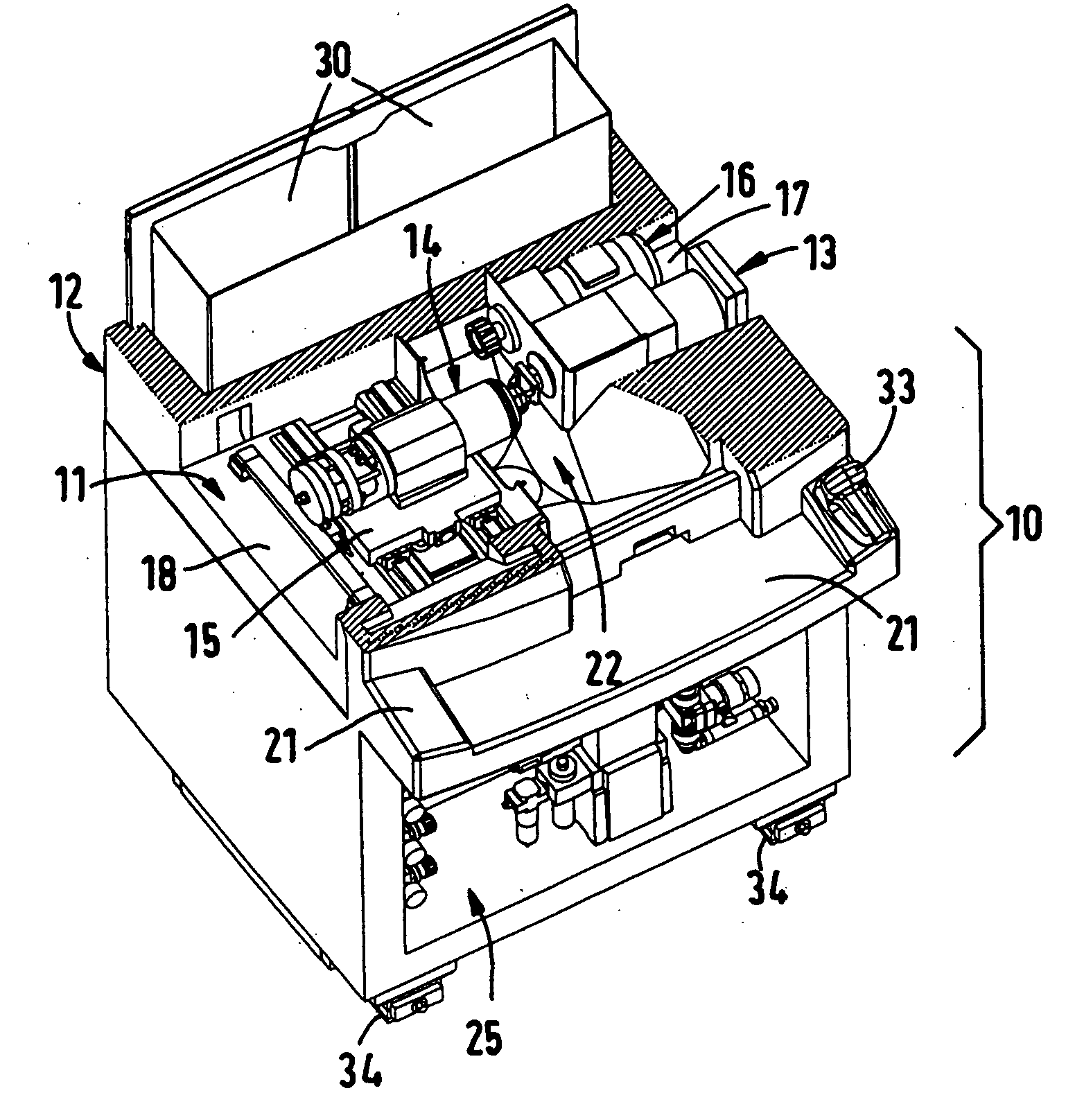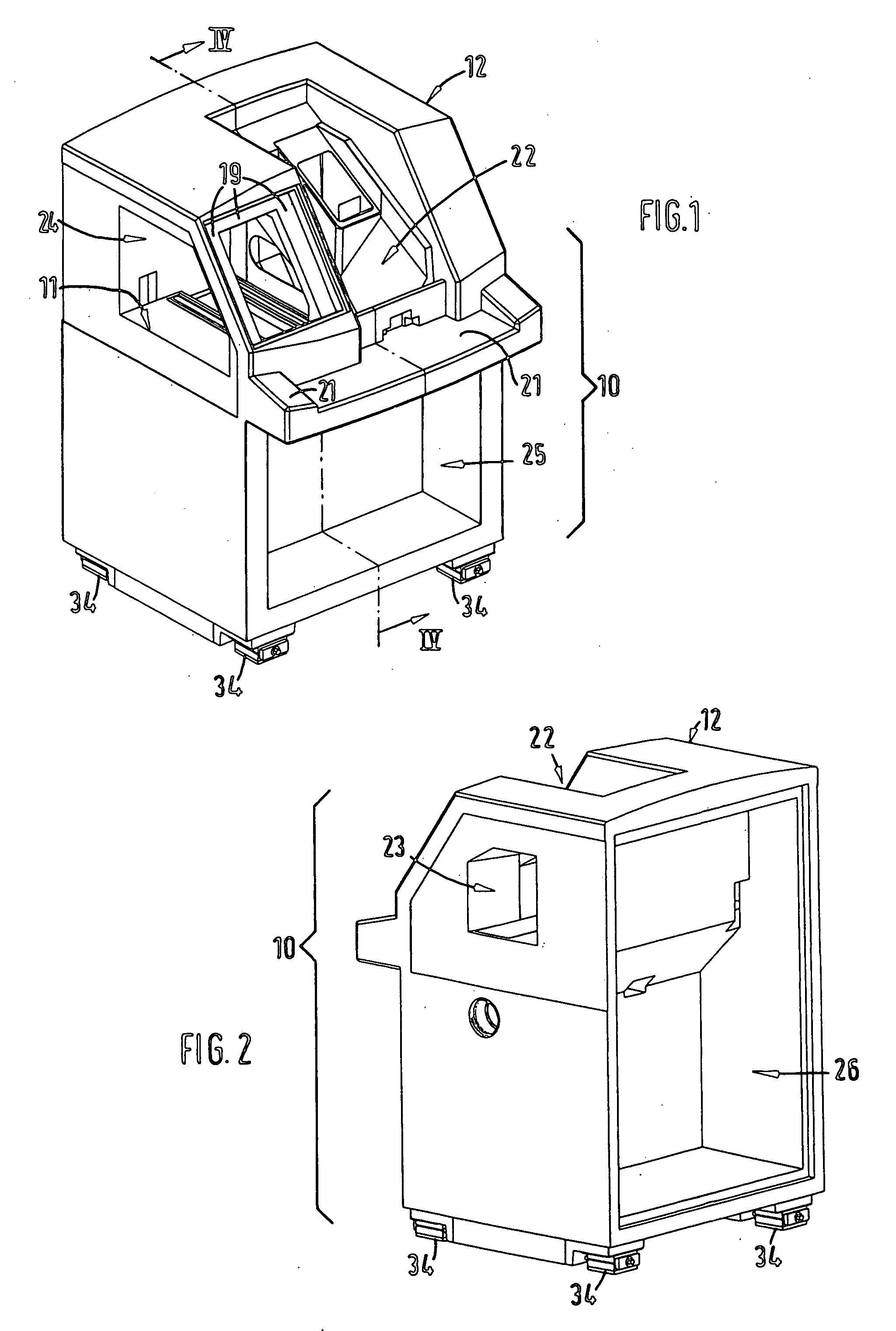Lathe for machining optical workpieces
a technology of optical workpieces and lathes, applied in the direction of lenses, manufacturing tools, other manufacturing equipment/tools, etc., can solve the problems of high mechanical, electrical and control engineering outlay required to generate synchronous mass compensation movements, and achieve the effect of preventing the transmission of disruptive vibrations generated by the fast tool to the machine bed, simple and cost-effectiv
- Summary
- Abstract
- Description
- Claims
- Application Information
AI Technical Summary
Benefits of technology
Problems solved by technology
Method used
Image
Examples
Embodiment Construction
[0018] The one-piece machine frame 10 which is shown in the drawings is cast from a polymer concrete suitable for machine construction. Polymer concrete is a composite material consisting of a mineral filler blend and a binder based on reaction resin, and is also referred to as cast mineral composite on account of its composition. The reaction resin used is usually an epoxy resin, since epoxy resins are best able to satisfy the main requirements of the cast mineral composite, namely a high modulus of elasticity, good damping behavior, low internal stresses, minimal shrinkage for high dimensional accuracy and a low thermal expansion coefficient.
[0019] The machine frame 10 comprises a machine bed 11 and a machine upper part 12 which is cast in one piece therewith. As can best be seen from FIG. 3, the fast tool arrangement 13 and the workpiece spindle arrangement 14 are arranged on the machine bed 11 and fixed thereto by screwing, in the case of the workpiece spindle arrangement 14 vi...
PUM
| Property | Measurement | Unit |
|---|---|---|
| Gravity | aaaaa | aaaaa |
Abstract
Description
Claims
Application Information
 Login to View More
Login to View More - R&D
- Intellectual Property
- Life Sciences
- Materials
- Tech Scout
- Unparalleled Data Quality
- Higher Quality Content
- 60% Fewer Hallucinations
Browse by: Latest US Patents, China's latest patents, Technical Efficacy Thesaurus, Application Domain, Technology Topic, Popular Technical Reports.
© 2025 PatSnap. All rights reserved.Legal|Privacy policy|Modern Slavery Act Transparency Statement|Sitemap|About US| Contact US: help@patsnap.com



